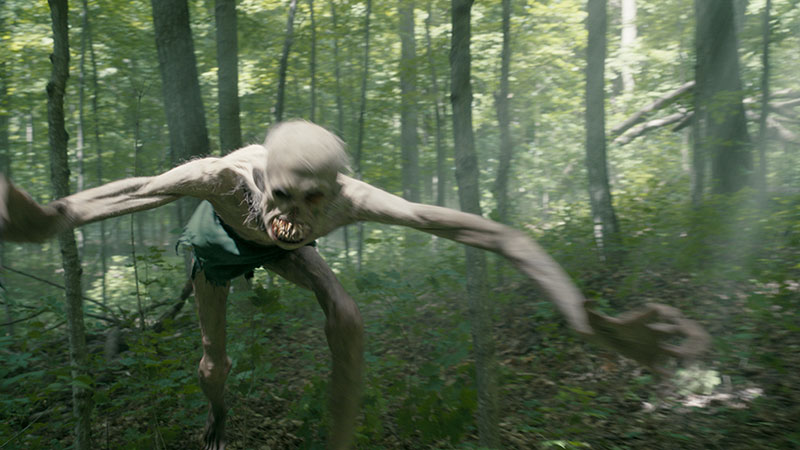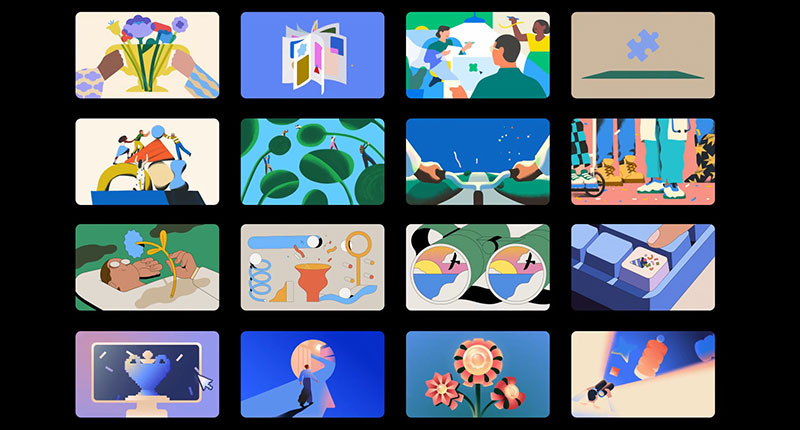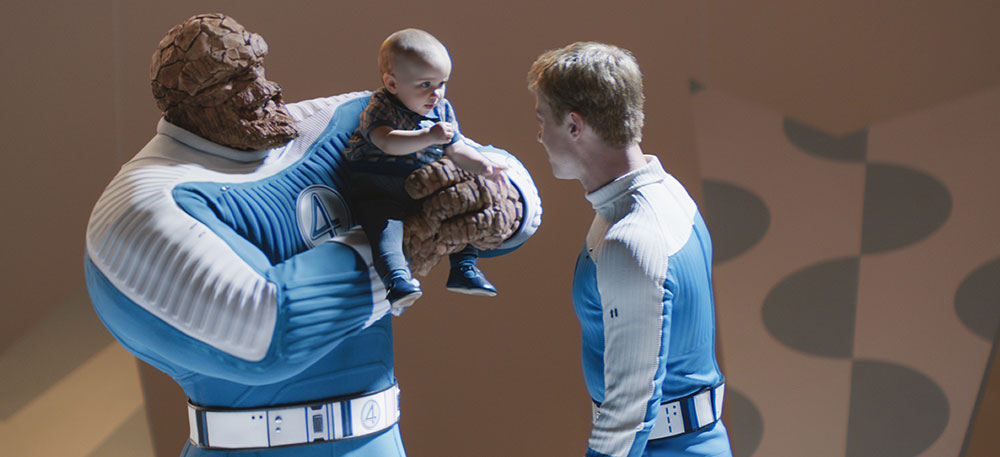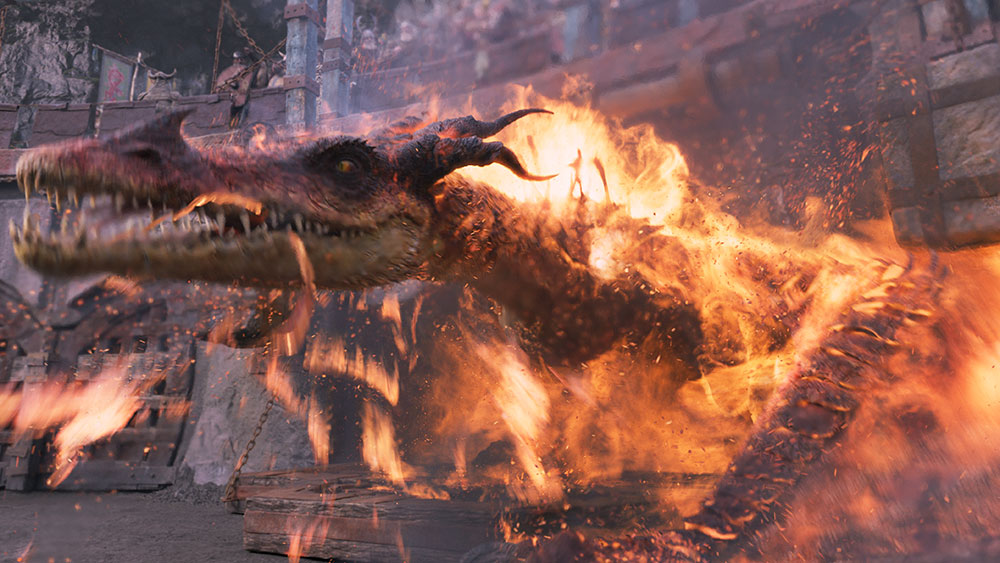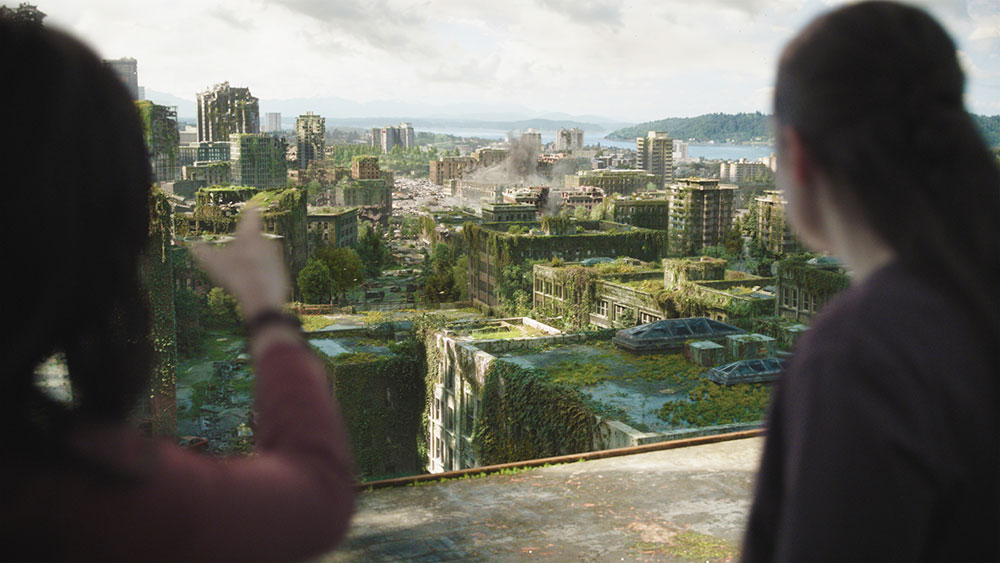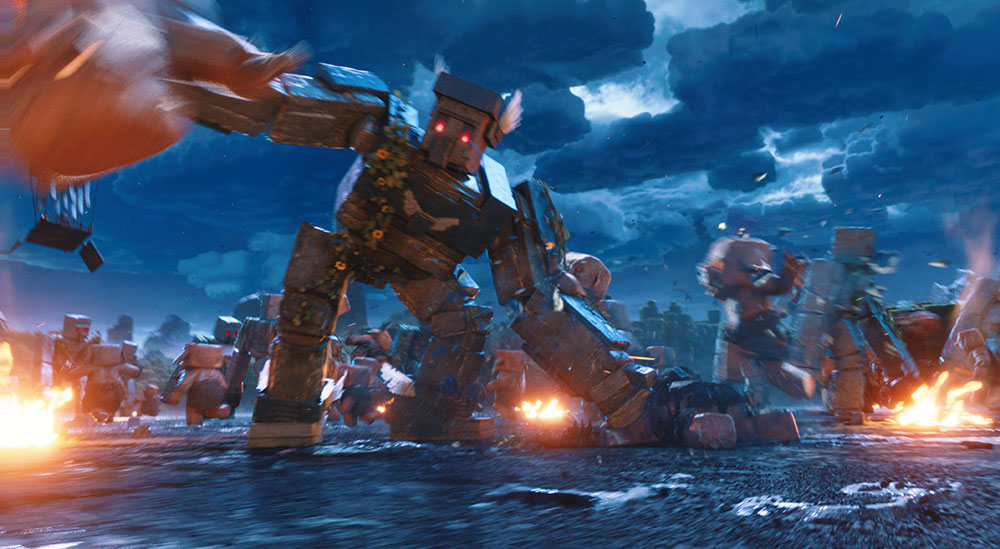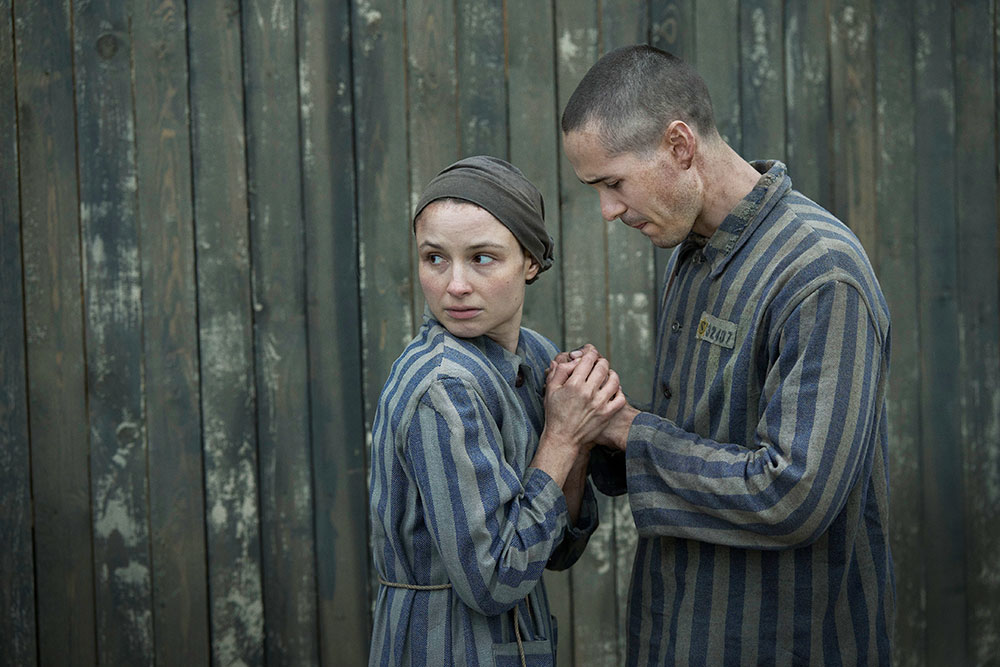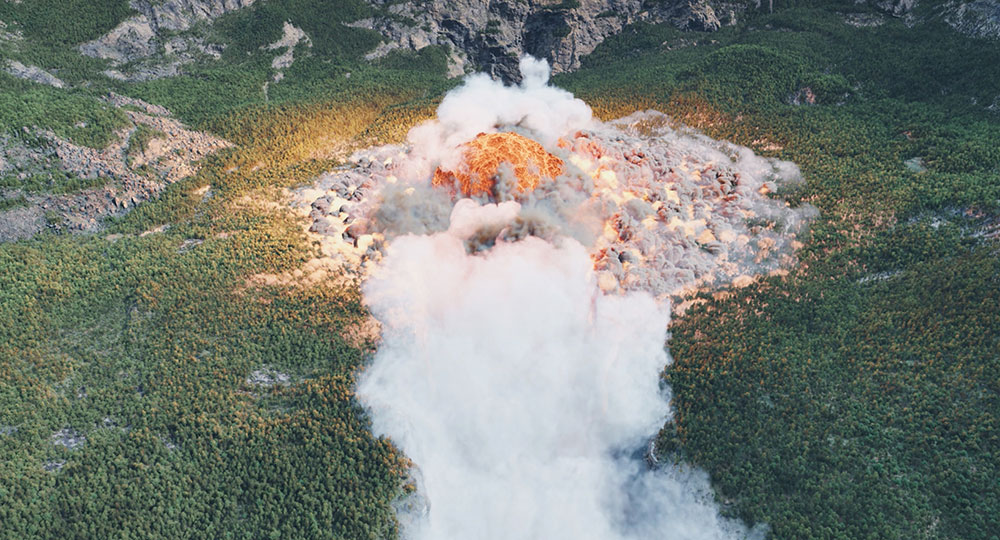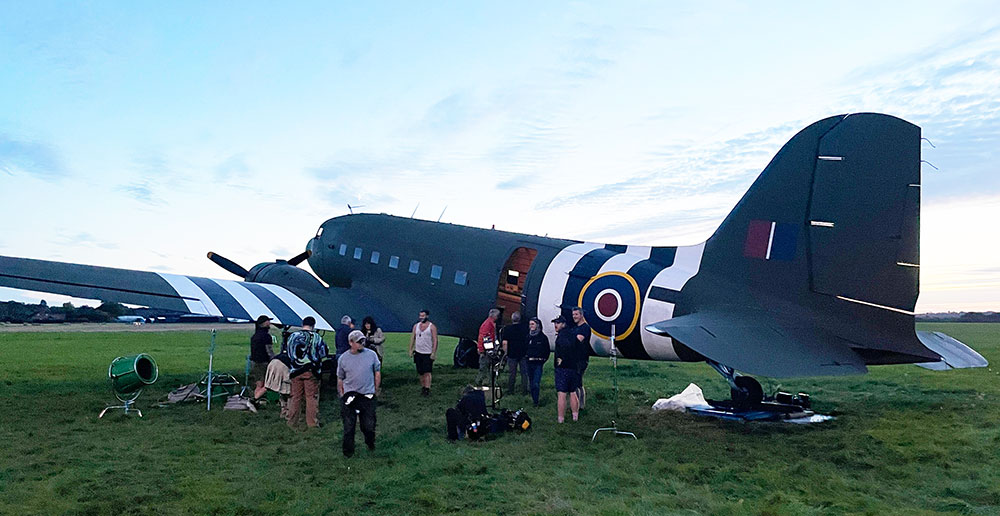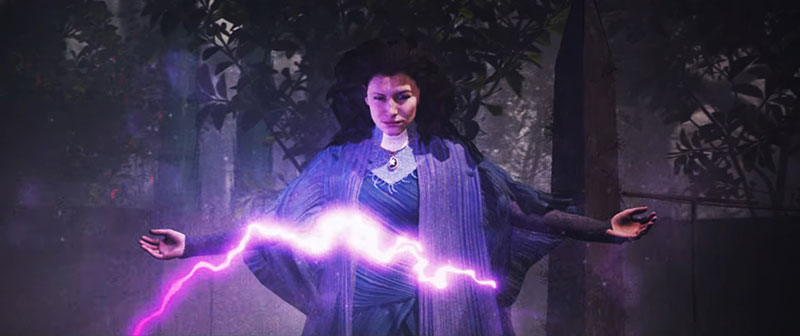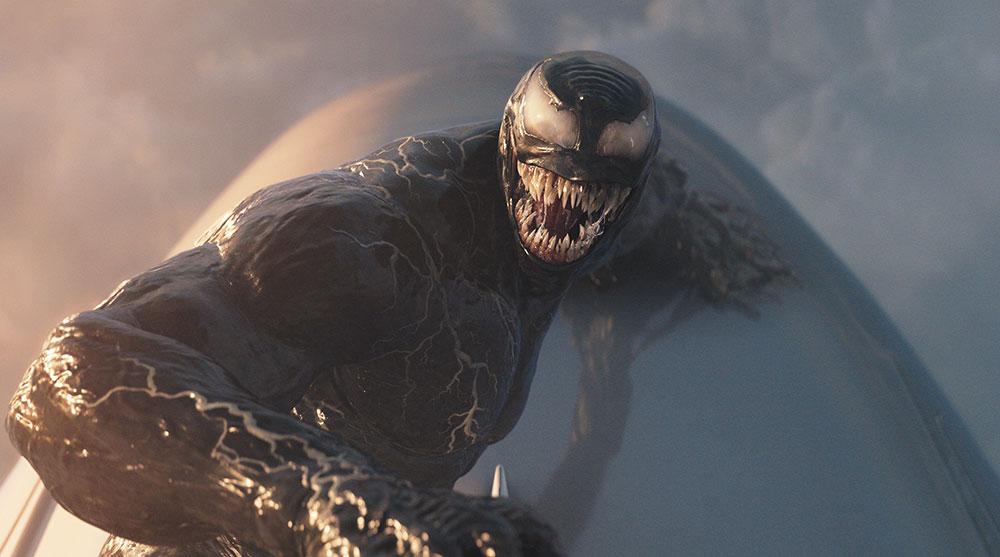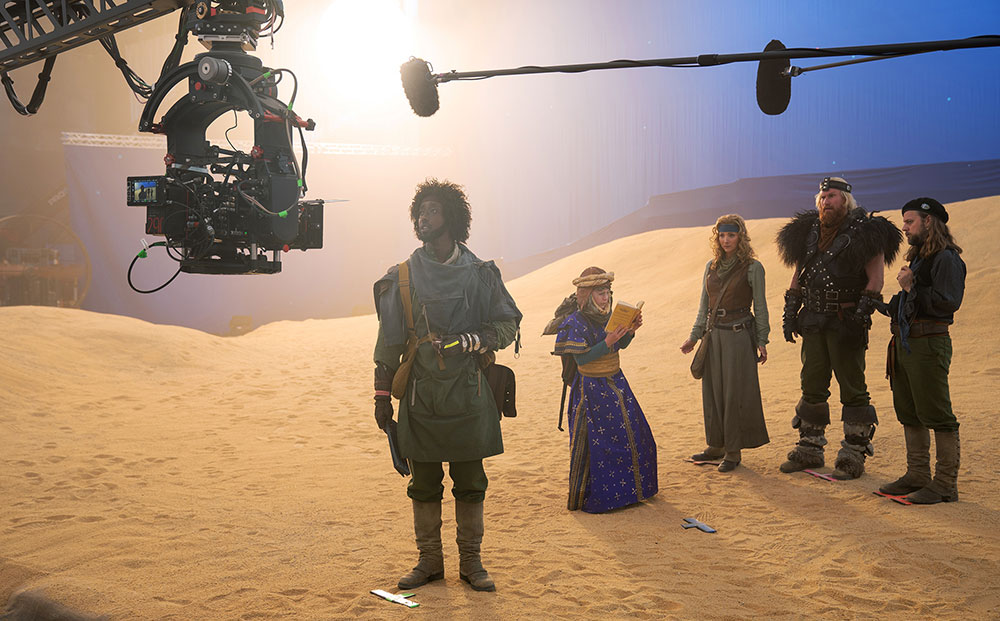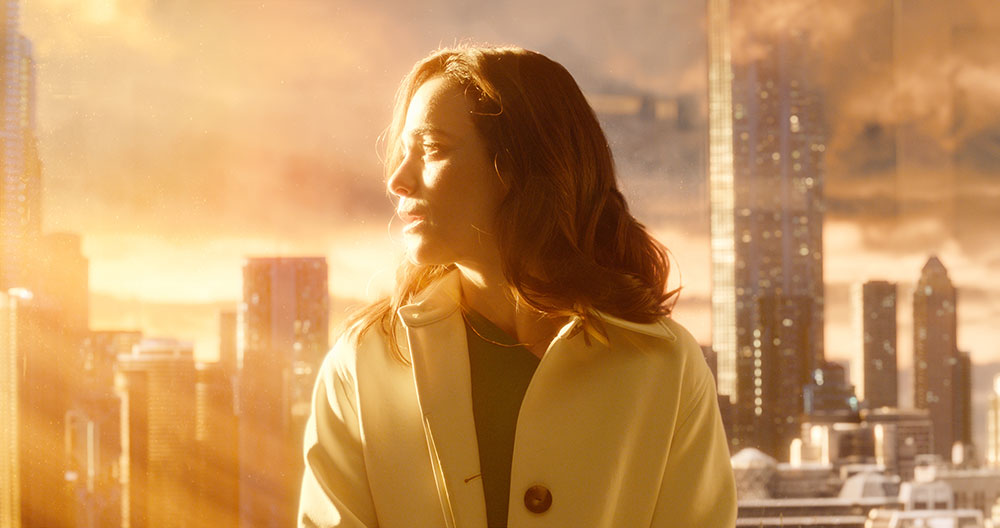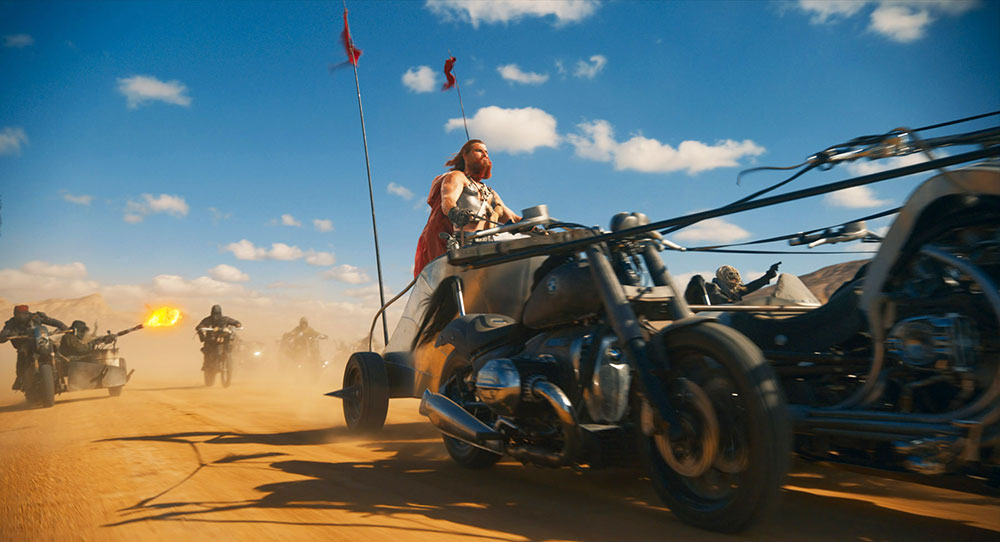Rachel Beniuk at WeFX talks about taking the role of VFX Supervisor for the first time, leading the team as they completed invisible environment and FX work on TV series Reacher Season 3.
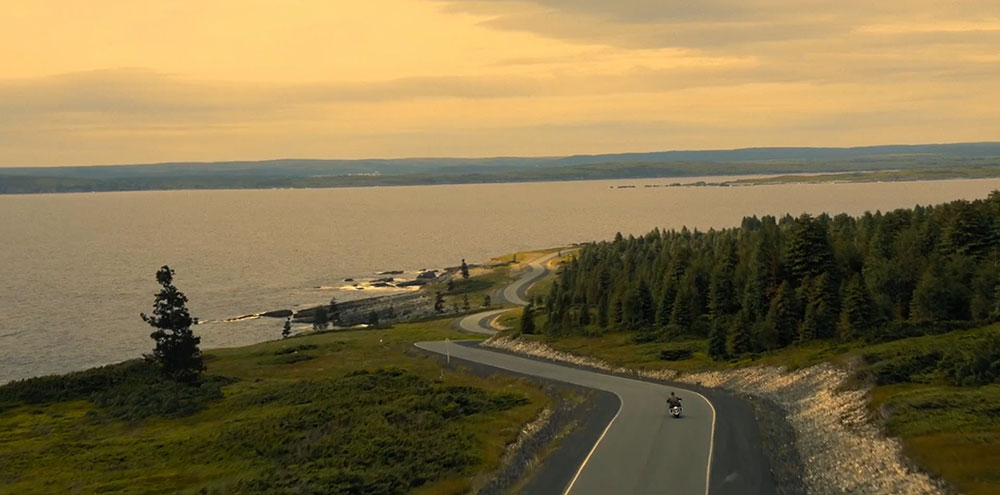
Rachel Beniuk at WeFX in Toronto started her career 10 years ago as a compositing artist. Recently she took the role of VFX Supervisor for the first time, leading the WeFX team as they completed work on TV series Reacher Season 3.
Rachel and the team had also worked on Season 2 of the show, and for the new series 3 were responsible for recreating the show's main environment – the rambling Beck estate and its mansion house and outbuildings – entirely in CG. As well as handling that complex environment, they worked on FX heavy sequences involving explosions, gun fights and other simulations.
The series added up to an ambitious project for the WeFX team. Digital Media World had a chance to talk to Rachel, not just about Reacher, but also to share her experience of making the transition from an artist focussed on one aspect of a project, to a supervisor’s role.
Building the Beck Estate
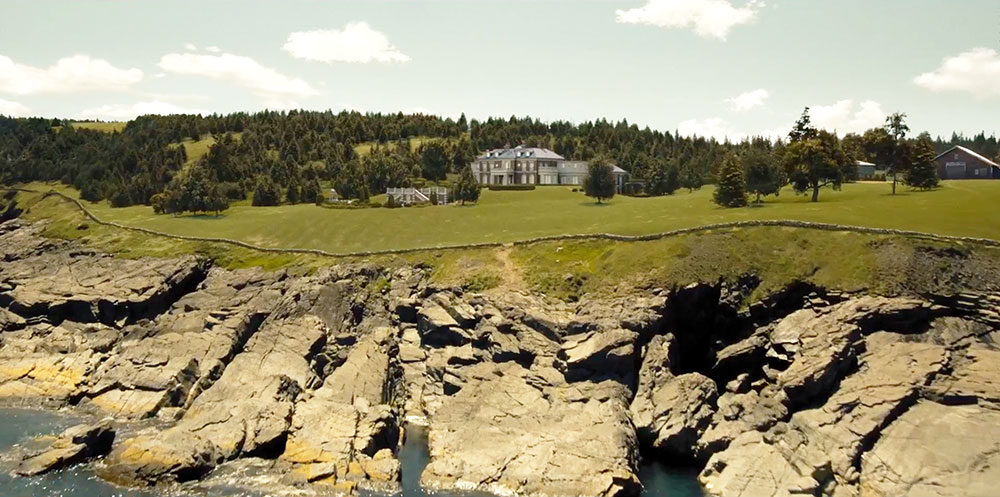
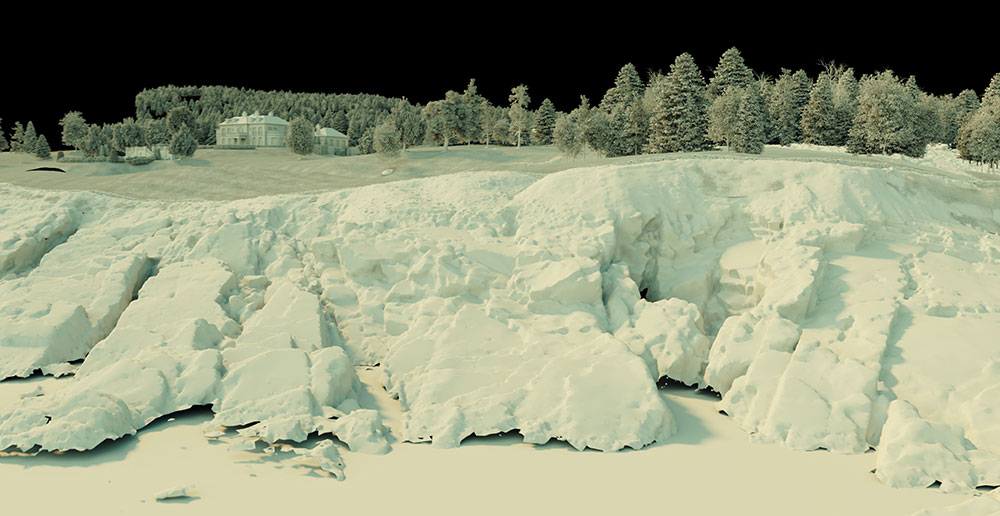
The Beck estate is based on a real mansion house in Ontario, Canada, called Escarpment House. The production travelled to Ontario to shoot plates and reference photography and capture LiDAR scans of the house and grounds. Rachel and her team received thousands of reference images they used to create the Beck estate setting for the story and to help with look development.
To match the story, another requirement was making the house appear to be located in a rugged cliff environment on the coast of Maine. To create that terrain, the production also shot imagery along the Newfoundland coastline to stand in for Maine. Meanwhile, the production shot some sequences on a practical set, at times calling for the team to replace the house with CG elements or a full CG asset, depending on the angle and scope of the shots.
Behind the scenes, the SAG-AFTRA strikes continued during the shoot, which affected when and how WeFX received the material and how scenes were shot. "We had started previs before the strikes," Rachel said. "This gave us a head start on the Beck estate, allowing us to build a base environment and test some early camera work. Once the strikes ended and production resumed, everything ramped up quickly.
Two Locations – One Story
“Making all the sources – footage of the house in Ontario, shots of the cliffs in Newfoundland and sequences shot on the sets – fit and work together was our biggest challenge. We devised an invisible line to establish where our Escarpment House imagery and the Newfoundland filming location began and ended, where we focussed our work to blend the two locations together. The goal was making the Beck house feel as grounded and natural as possible, despite the fact that the terrain in Ontario was relatively flat compared to Newfoundland.”
A part of that challenge was the fact that Escarpment House is not on the coast at all, but in a range of low hills with a view of Toronto, not the sea. They built an ocean asset that they used to build out the views of the scenery seen from the House, which they could position according to the angle, lighting and composition of the shots.
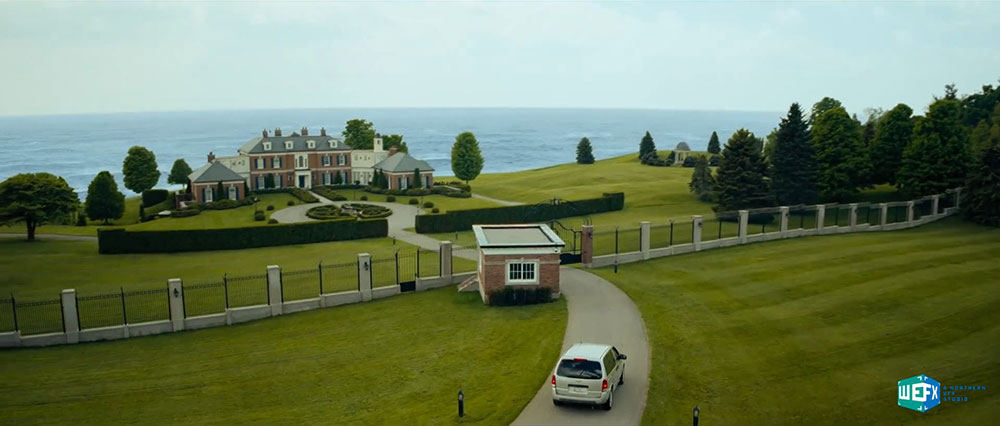
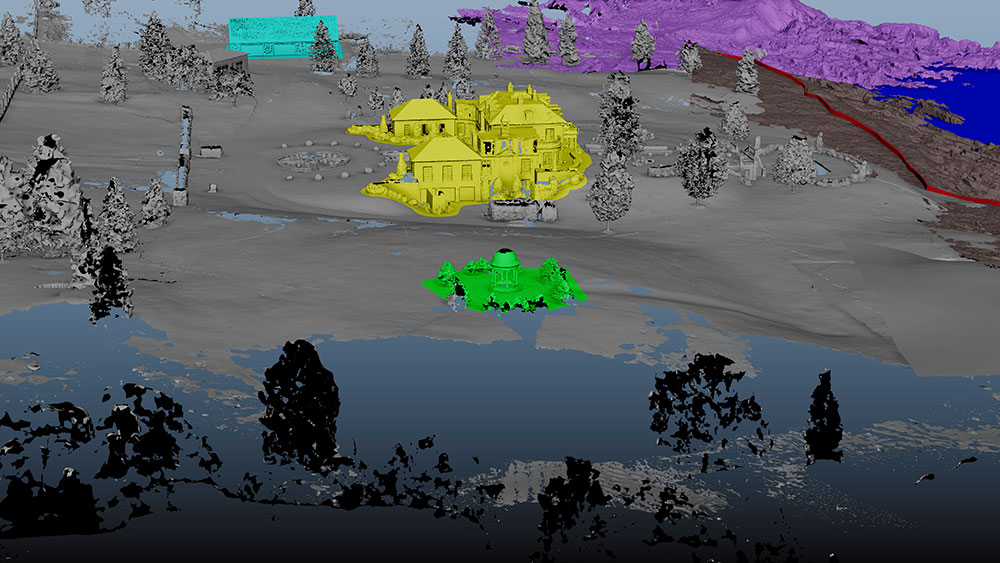
Their approach was to create variants of the environments to work in different situations. The variants gave them a head start and still allowed them to augment the topology of the landscape on a shot by shot basis, always led by the photography. Rachel said, “For example, if we had filmed a sequence practically at Escarpment House and then had a character filmed in Newfoundland running up a slope toward the house, the team would work on the environment to make those shots harmonise.
In the Balance
“The balance between CG and live action content seen in the final shots depended on various factors. We had whole sequences that had been shot during a time of year that didn’t match our story, which meant adding and altering trees. We also had to composite in the backgrounds seen looking out through the windows of cars, and a series of day-for-night shots.”
Determining the work for each sequence was collaborative. The team would sit down with the production to watch through the edit of the live action and decide, step by step, exactly how the landscape and skills of the team could be used to tell this story and engage the audience.
WeFX had a certain amount of freedom to build out the landscape in a way that the team felt would be visually appealing. For instance, they were asked to add a fence to a shot, but once they started working on it, they realised the whole image could be improved if they added a hill behind it as well – and the production agreed.
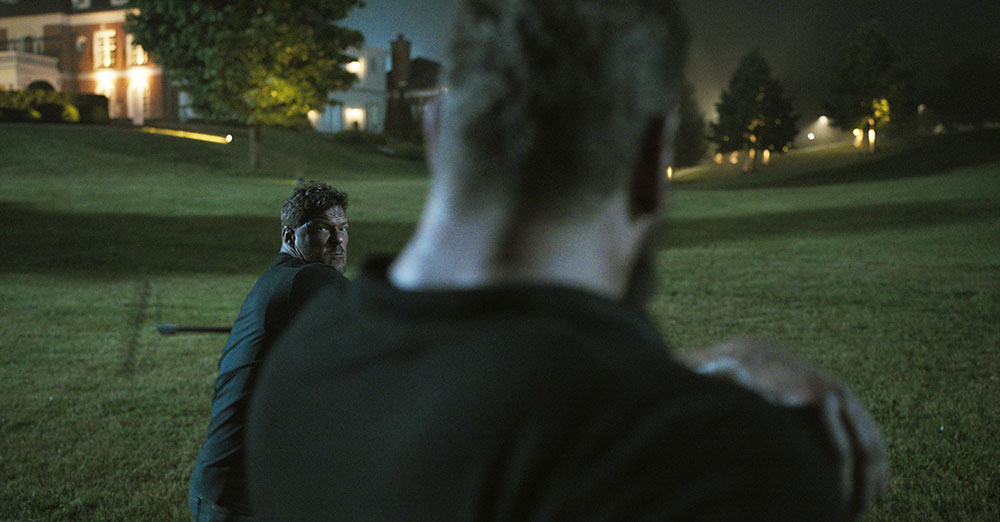
Blow-up
Like all of the Reacher series, this project featured plenty of fast, furious action, including explosions. At one point when a house explodes, the production set off and filmed a practical explosion on set. This served as ideal reference for the team for the colour and the look of the fire.
A more unusual kind of explosion involved a microwave oven blowing up inside a kitchen. WeFX received footage of a practical microwave oven, and some 2D elements to insert inside it. Rachel said, “From there, we added sparks. When it came time to build the explosion, we started with reference we found online.
“It wasn’t a straightforward scenario – we had three simulations, created in Houdini, that needed to make the gas in the air appear to catch fire. It was a matter of experimentation. We showed the client our take on the shot, and then talked through their feedback, taking more direction on the specific details.
“We layered the three simulations to ramp up the pace of the explosion, so that the result isn’t linear, but exponential. We timed them in Houdini, and layered them on top of each other in the composite. The first, smallest explosion was inside the oven, followed by a bigger one out in the room, hand animating the door blowing off, with the largest one last, adding smoke layers over that.”
The death of Zachary Beck was another key FX scene in which the character was shot multiple times. It required matchmoving the actor, creating a cloth simulation and adding further sims to the shirt to create small spurts of blood, as well as a pool of blood forming around his shoulder on the floor. “During filming, the gunfire had struck the ceiling causing fragments to fall to the floor, so we ensured that our pool of blood flowed around those fragments to improve the digital integration,” said Rachel.
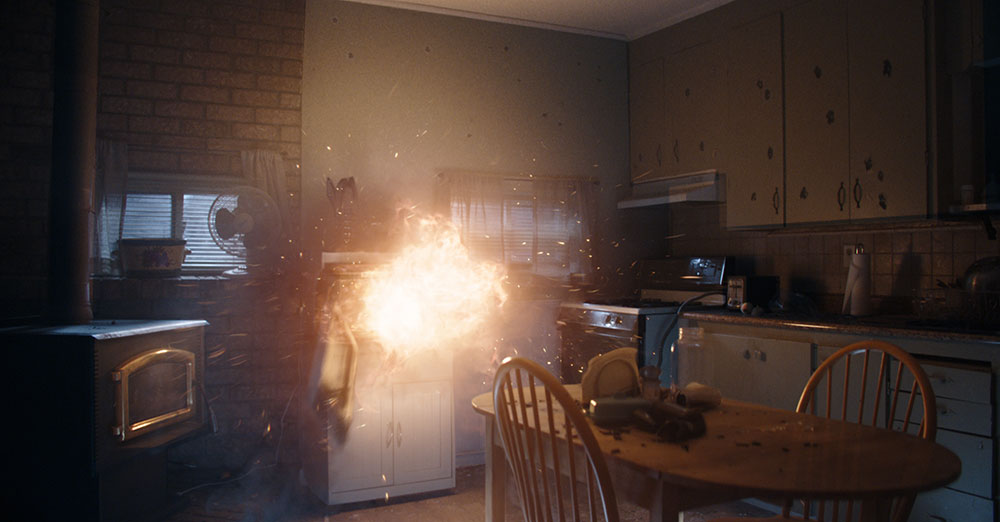
People and Relationships
Rachel found the relationships underpinning their work on this series to be essential to its success. She had worked with the client-side producer and supervisor Cary Smith at the beginning of her career when he was a studio VFX supervisor. “I was a compositing artist on a show with him, and having that history became an advantage on this project. Also, our VFX Executive Producer Steve Stansman already had a good working relationship with Cary, which helped open the communication channels. We could ask questions anytime without delays.
“For example, when we were working through the variants we created to blend and build out certain areas of the Beck estate environment, we could show him our ideas for solving issues, quickly get feedback and work through to the final solution. He sometimes joined the team for dailies on the spur of the moment, as well.”
Since leaving college, Rachel has worked at studios including SpinVFX, Mr. X and Folks before finding her way to WeFX. About Reacher, she commented that the strikes made the project a fairly long arc for everyone, but from the beginning, it was about collaboration. “I've always believed in leaning on your team's strengths and the expertise of those around you. Our team at WeFX is incredibly talented, and it's that trust and creative synergy that led to our best work," she said.
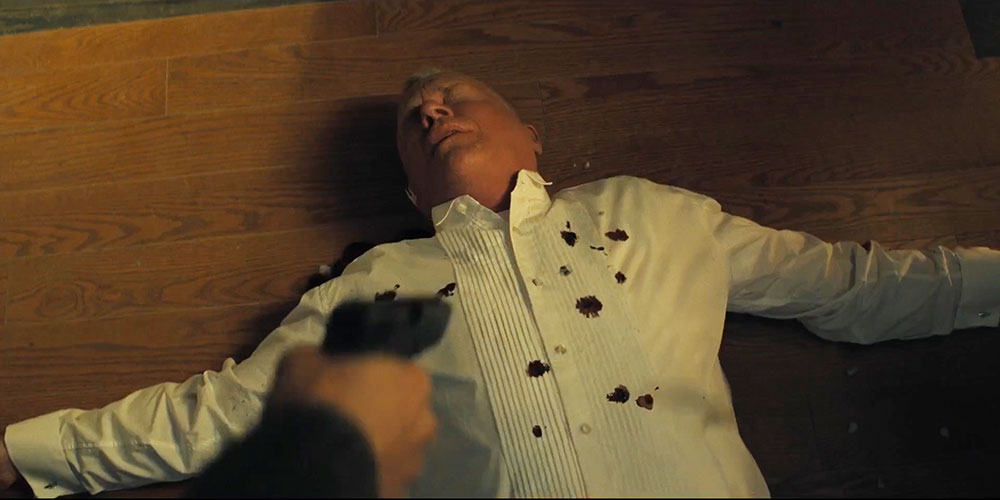
Compositor’s Journey
Rachel’s attraction to compositing started when she was still a student. She said, “I had actually started at college thinking of a career in 3D animation. Compositing was one of many courses we took, but I recall my professors advising us of just how difficult it is to get into an animation career. They recommended sticking for a while with compositing and really putting effort into it.
“I took their advice, and that was when I realised how much I liked the way compositing gives you the opportunity to make an image look its best, to bring out its beauty. I especially love integration and how it pulls elements together to create an image. The quality of compositing in your footage isn’t really negotiable. If it misses the mark, it won’t serve its purpose in the story.”
Rachel also loves problem-solving. “Working through a problem is like solving a puzzle,” she said.
Looking to what lies ahead for VFX artists and her own career, she said, “Right now, I do see some negativity in this industry, for instance, around artificial intelligence and job security. However, I’m also excited to see exactly how AI is going to play out and become useful. An AI-based tool like Copy Cat for Nuke, for instance, looks very promising.”
Turning the conversation back to her work on Reacher, she described one of her favourite shots from the series, the final one of the hero riding off into a pale sunset over the ocean. (See the image at the top of this article,) “We received an aerial scan of the environment, which was very accurate. The live footage simply shows a road cutting through an open field that slopes down to the sea on the left. WeFX augmented that to feature a large, dense forest on the right side of the road, and added a few lone trees on the left between the road and the shore.” The result is unexpectedly peaceful and beautiful. www.wefx.com


